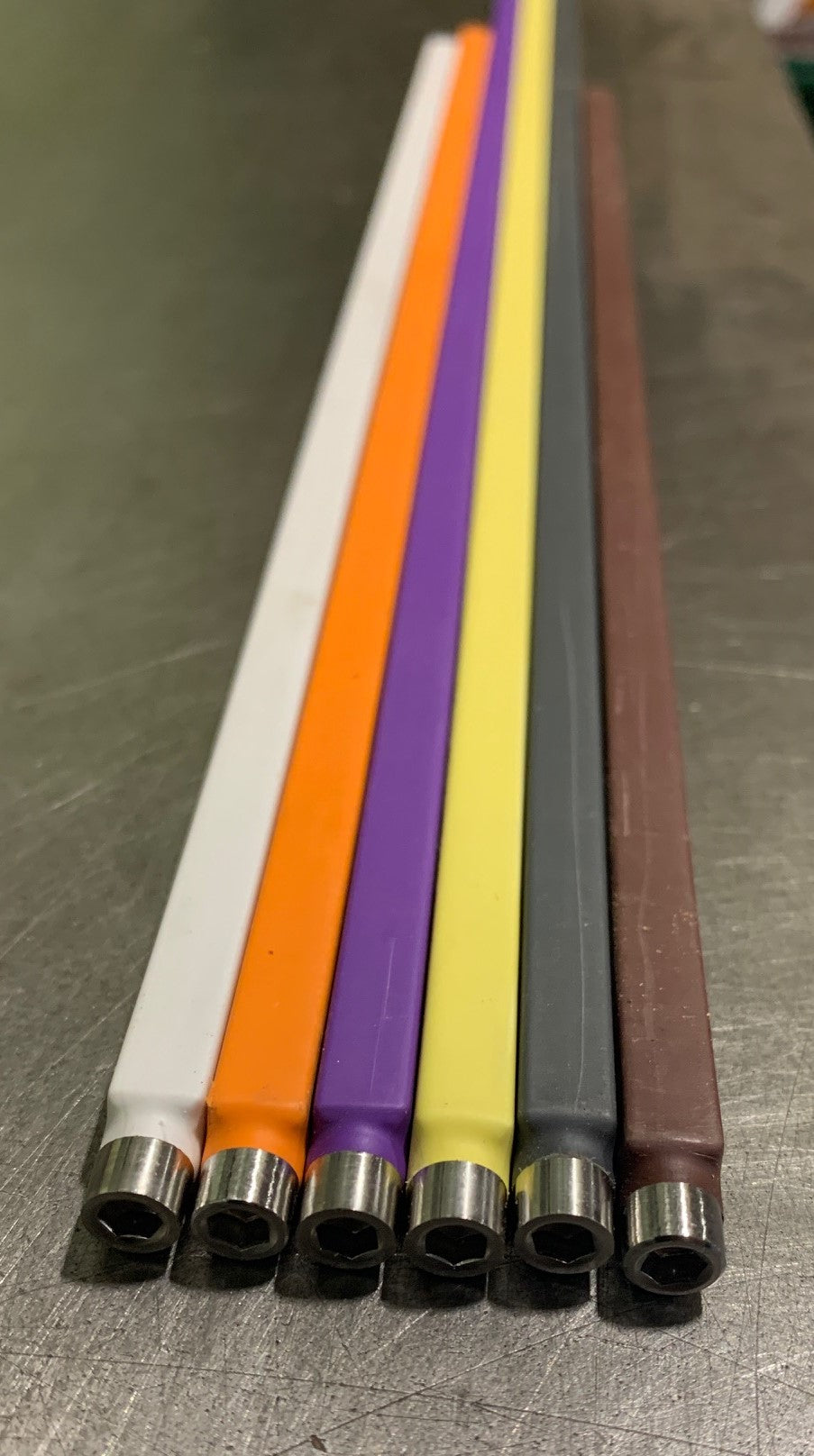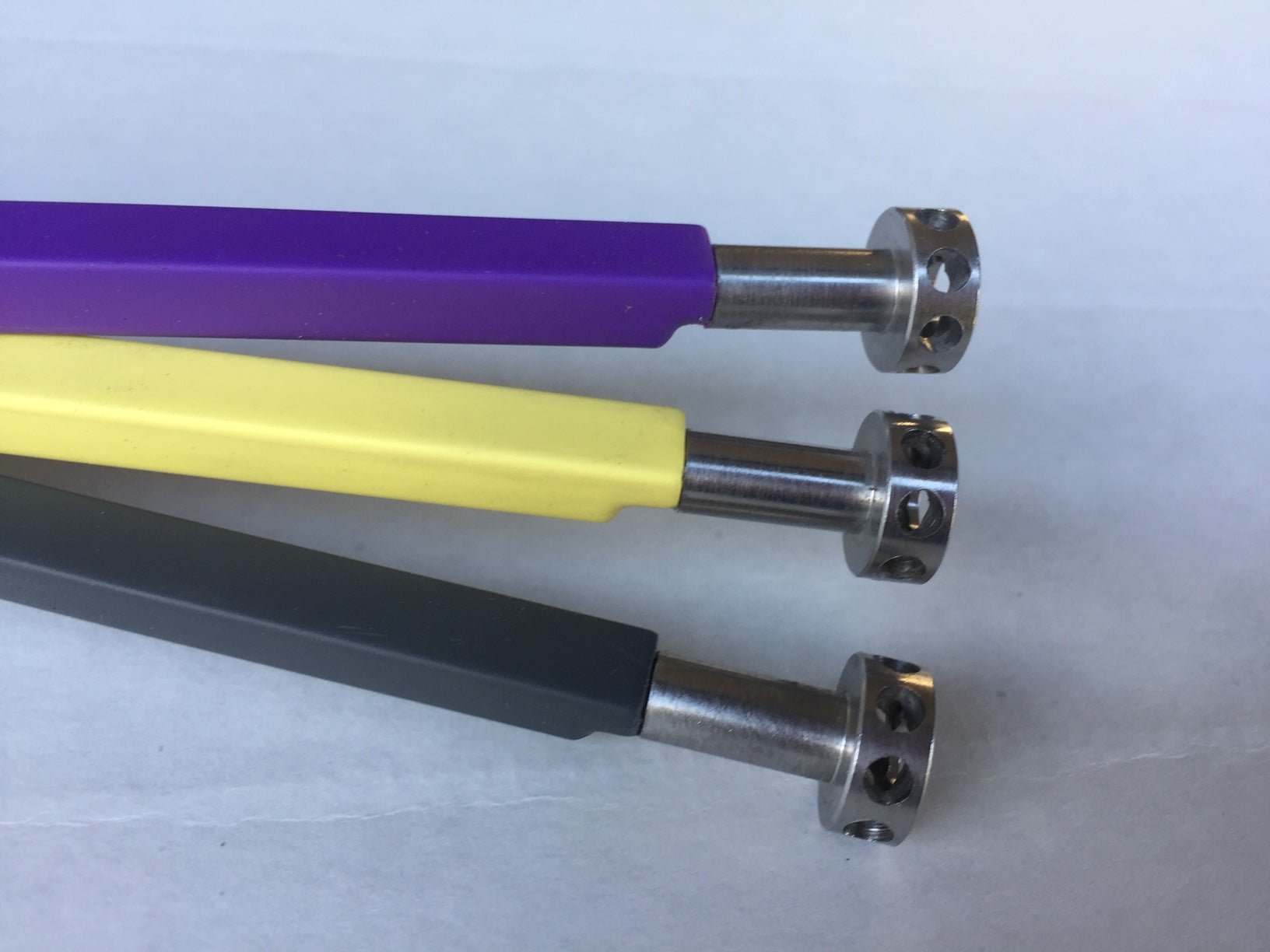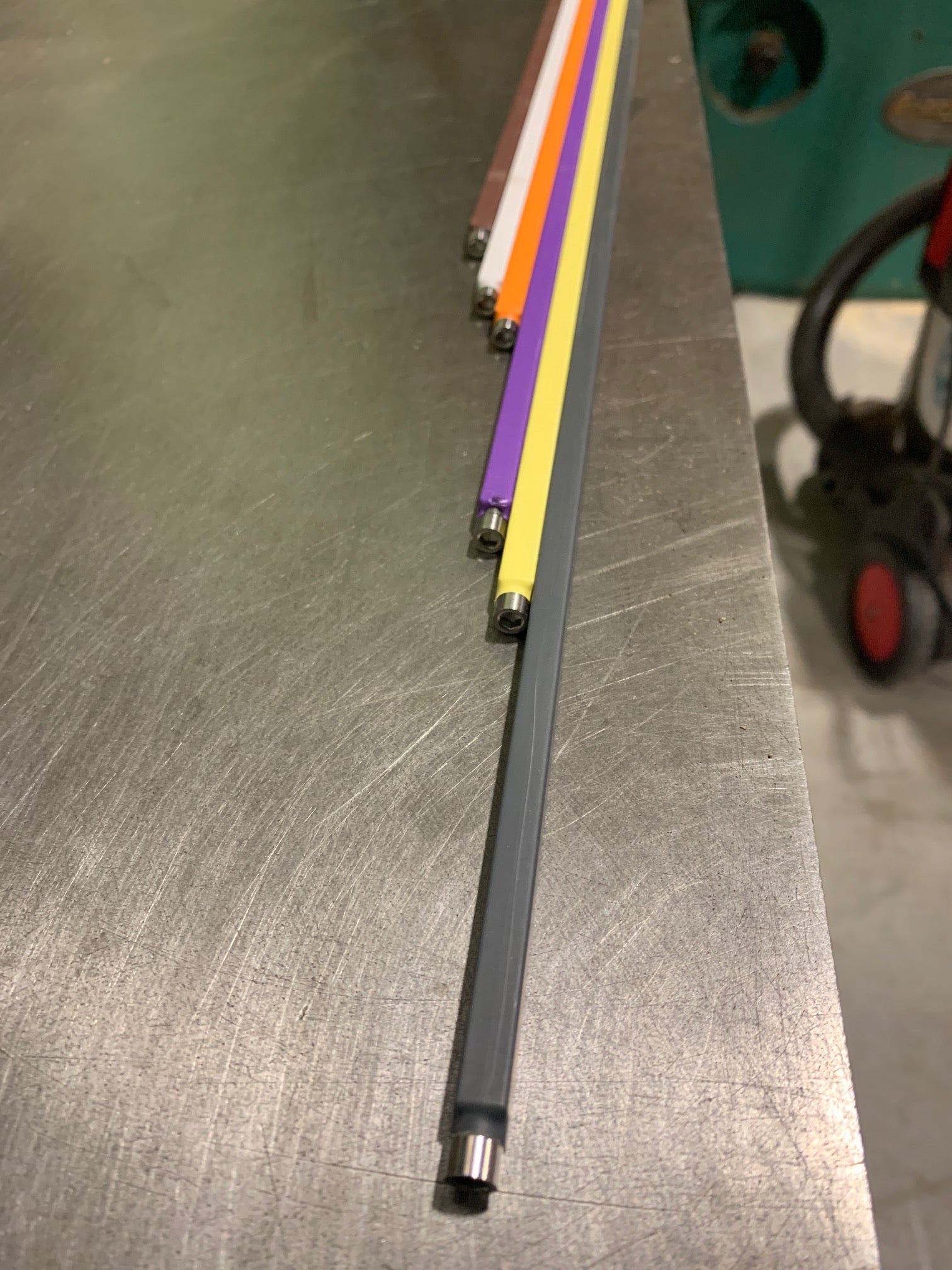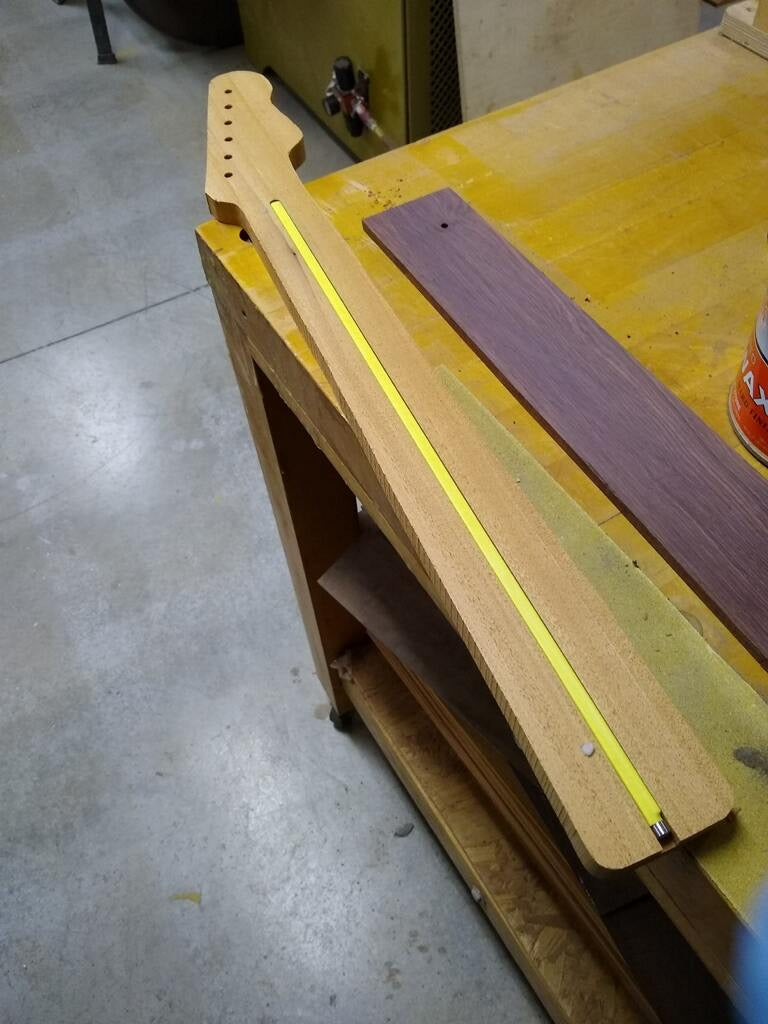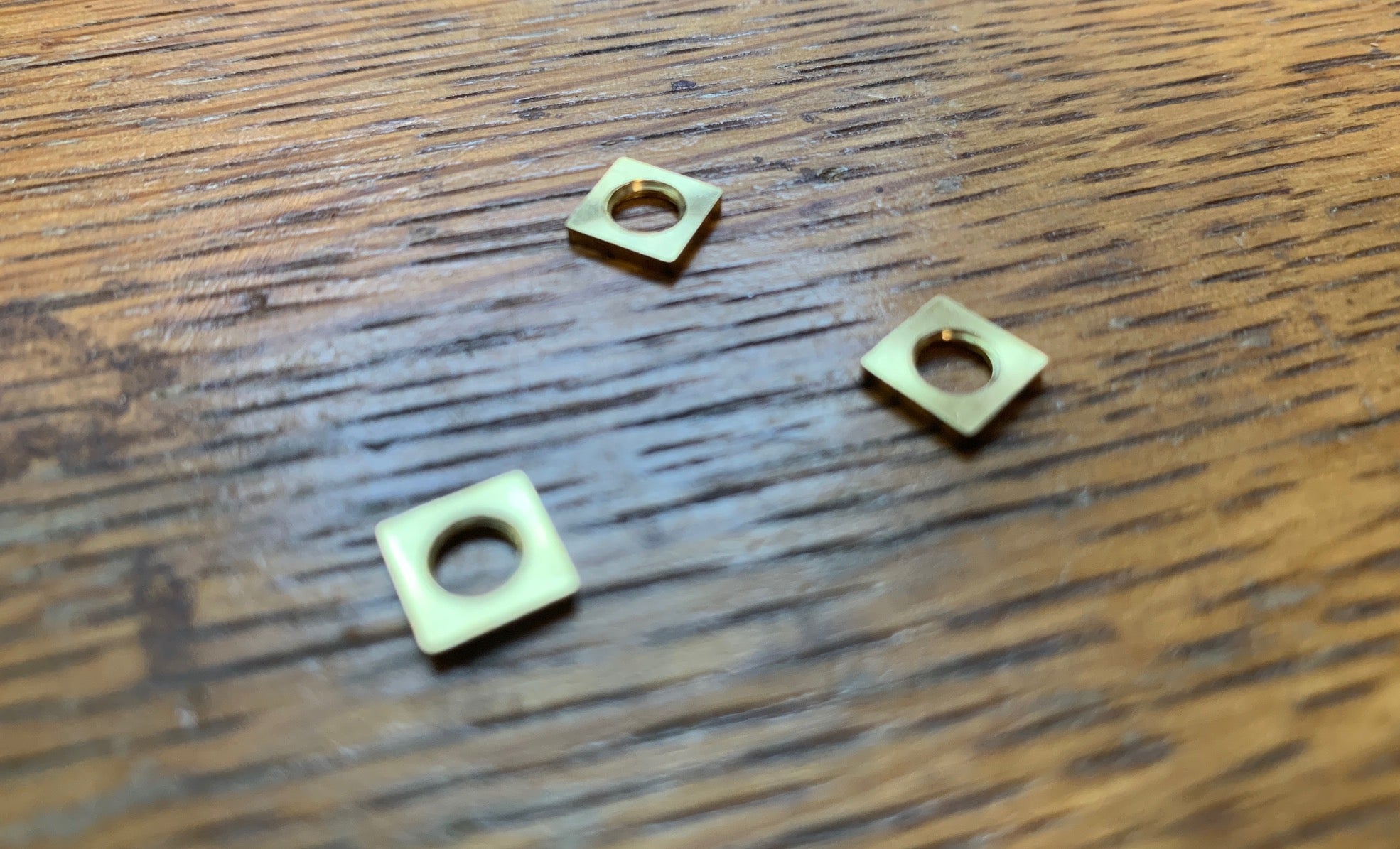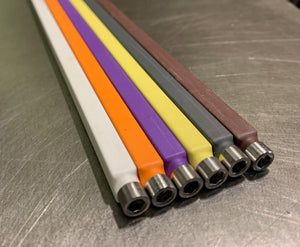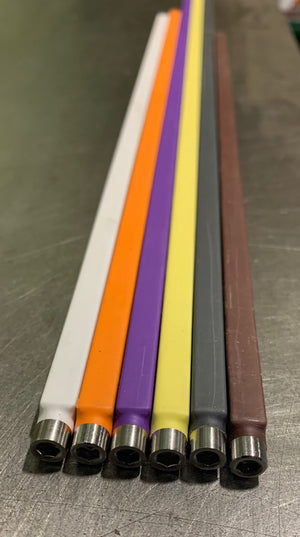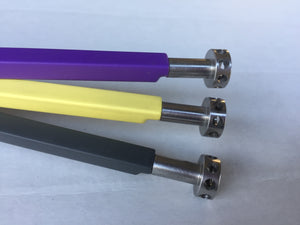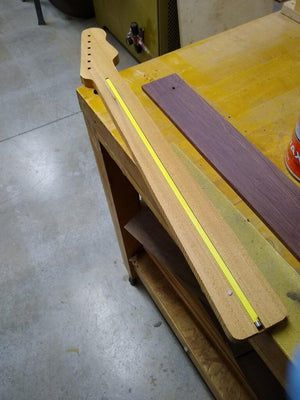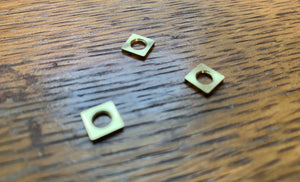FlexStrong Single Action UltraLight Truss Rods
Guarantee Safe Checkout
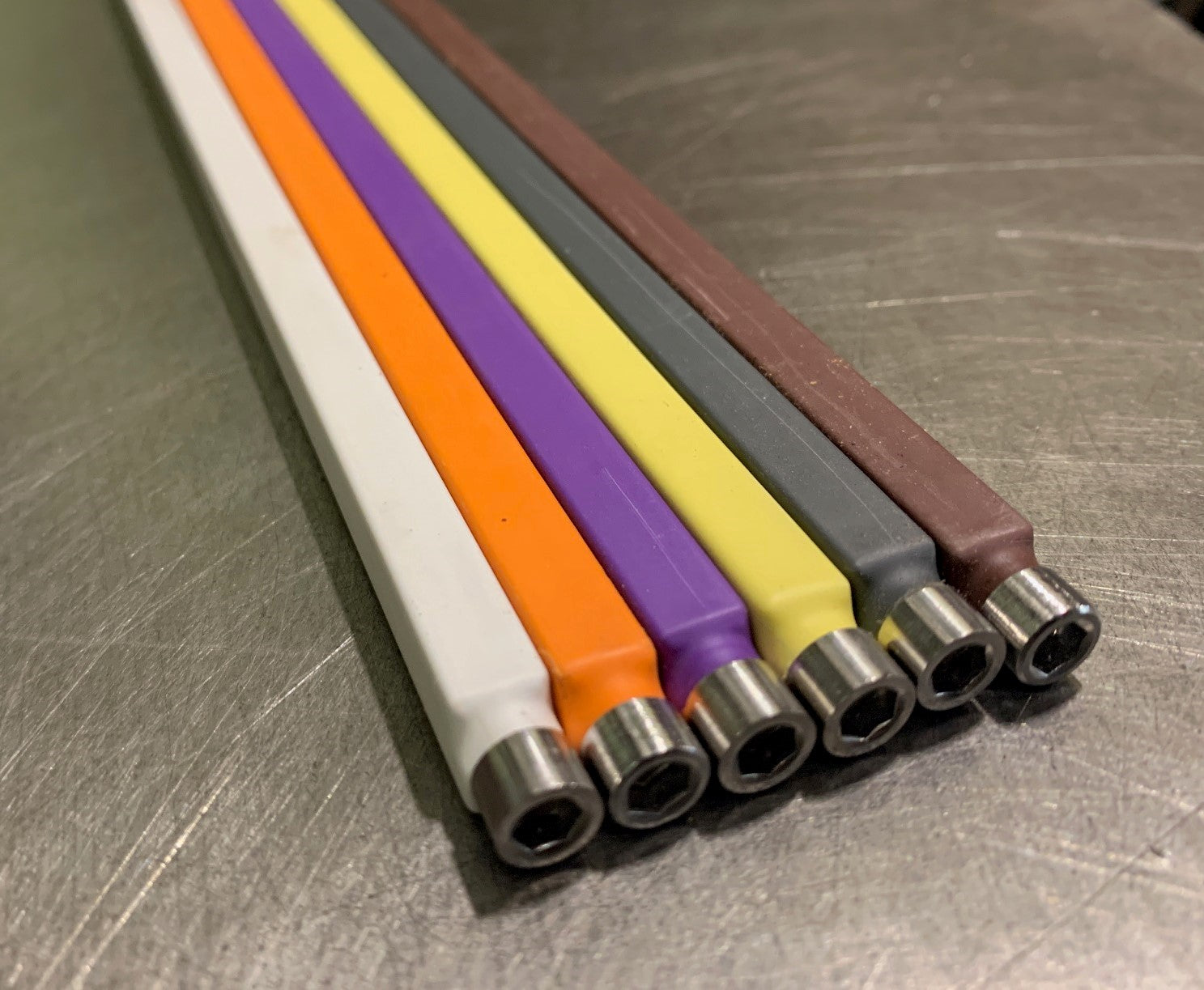
FlexStrong Single Action UltraLight Truss Rods
Please allow up to 10 - 15 business days for all truss rod orders to ship. Please reach out if you need to rush the order and we will do our best to accommodate you.
IMPORTANT NOTE: Lengths listed are the OVERALL LENGTH of the entire truss rod. All truss rods are made to order.
DISCOUNT CODES WILL NOT BE HONORED FOR TRUSS ROD PURCHASES.
WE CAN ONLY OFFER 6 AND 12 PIECE DISCOUNTS.
Designed and manufactured in Healdsburg, California by Mike Gutsch Guitars, exclusively for Allied Lutherie!
Features of the UltraLight rod include:
- thinner profile safer for thin necks, .28" x .28"
- available in 5 standard lengths, custom lengths available
- constructed from 7075 aircraft-grade aluminum and stainless steel, highly corrosion-resistant
- very light weight, 11 ounces/Inch (white: 1.43oz, orange: 1.65oz, purple: 1.95 oz, yellow: 2.035oz)
- simple, elegant design - mechanically assembled; no welded or brazed joints
- even pressure applied across the entire length of rod, not just at the "end blocks"
- easy installation, fully removable/reversible; can be oriented to either resist or assist string tension
- tested to beyond 35 inch-pounds of force
- installation tool available (see pictures) HIGHLY RECOMMENDED
Spoke Nut Upgrade - Low profile spoke nut has a 0.5" diameter. Spoke wrench sold separately ($2.00), select wrench option above.
X-Nut Upgrade - Fender-style X-Nut has a 0.375" (3/8") diameter and is the same length as our traditional nut at 0.75" (3/4") long.
| Part No. | Description | Price Ea. | 6 - 11 | 12 + | 100+ |
| PTRULC | Ultralight Classic or 12-fret, 13.75" (WHITE) | $30.00 | $29.00 | $27.00 | Call |
| PTRULSS | Ultralight Steel String, 15" (ORANGE) | $30.00 | $29.00 | $27.00 | Call |
| PTRULE | Ultralight Electric Guitar, 17.75" (PURPLE) | $32.00 | $30.00 | $28.00 | Call |
| PTRULB | UltraLight Electric/Banjo, 18.50" (YELLOW) | $32.00 | $30.00 | $28.00 | Call |
| PTRULCLB | UltraLight Your Custom Length, over 21.50" or Bass 22.5" total length, BASS IS GREY CUSTOM IS BROWN | $35.00 | $33.00 | $31.00 | Call |
Thank you for your interest in this groundbreaking new truss rod design! As you may already know, it was designed to lend resistance against the pull of the strings (as all truss rods are designed to do), but with the intention to be removed if need be, to turn over and enable assistance to the strings in pulling the neck from a back bow.
There are two methods of installation of this rod to insure that it will be able to slide in and out of its home at will: (either way will require routing the same size slot in the neck- more on this later.)
- Rout the slot, prepare the neck/fretboard glue interface, put the glue-scraper tool (which may or may not have been included with your order) into place at the far (i.e. blind) end of the slot (typically the heel-end of neck), apply glue, clamp the fretboard into place, pull the scraper tool out of the slot, clean off the tool, repeat as necessary and slide the rod (long-side-up for back bow action) into its new home.
- Rout the slot, prepare the neck/fretboard glue interface, lubricate the outside of the rod with paste wax (better for warmer temps) or a palm oil (better for cooler temps) place the lubricated rod into the slot, apply glue and clamp the fretboard into place.
To remove the rod, you may be able to back out the adjustment screw far enough (but with some threads still engaged) to get purchase on it with your fingertips, pliers, or gently pry out with a flathead screwdriver using the fretboard-end or string nut to fulcrum against. If need be, you can fully remove the adjustment screw and insert a longer 10-32 screw or a length of 10-32 Allthread to use as a handle to pull the rod from its slot.

